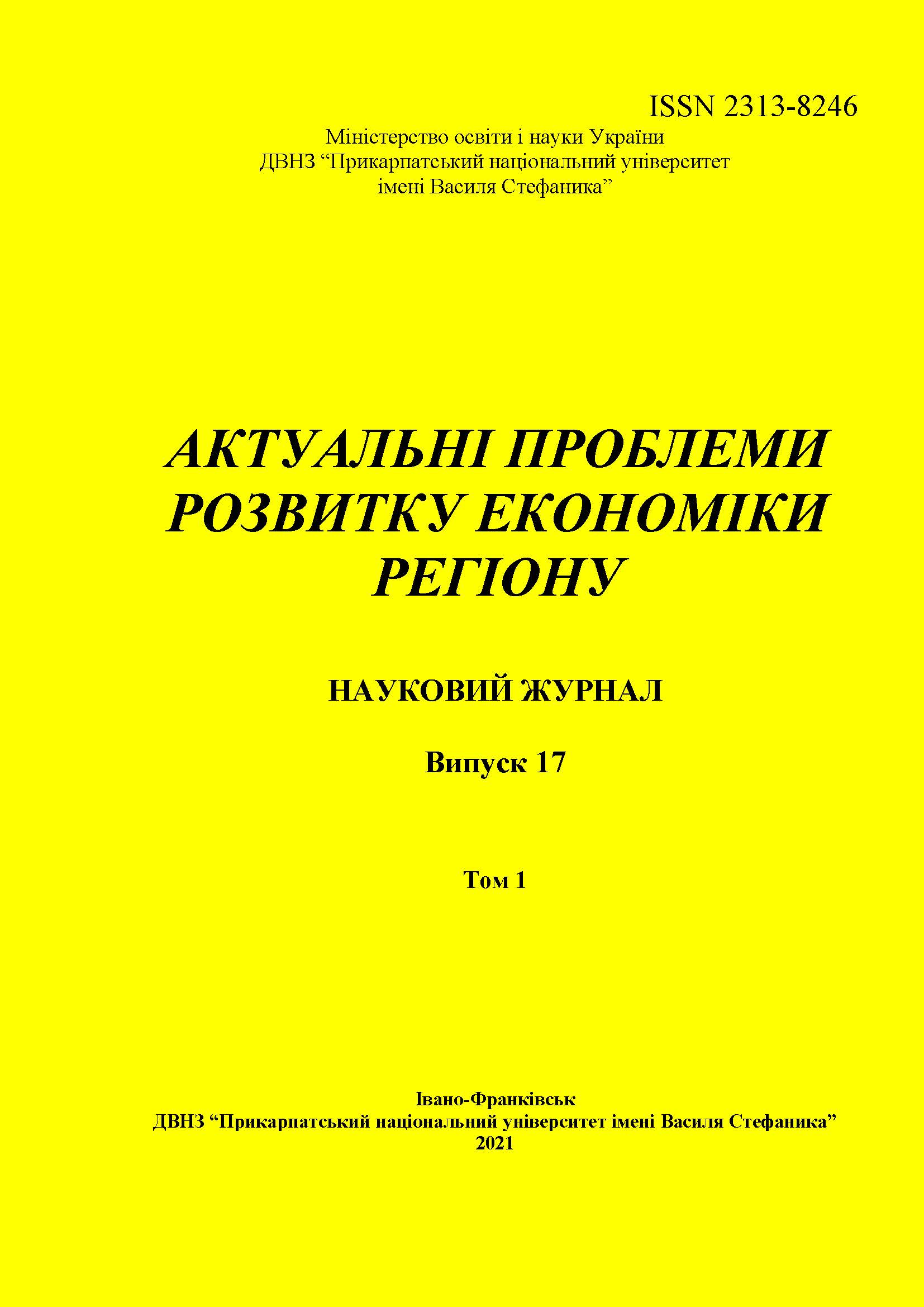PECULIARITIES OF THE BUSINESS CYCLE IN THE MODERN WORLD ECONOMY
DOI:
https://doi.org/10.15330/apred.1.17.32-40Keywords:
economic cycles, economic growth rate, economic structure, tertiary sector, COVID-19Abstract
The article examines the possible factors of increasing the amplitude of cyclical recession in the developed countries of the world during the global financial crisis of 2008-2009 and the pandemic crisis of 2020 caused by COVID-19. The developed countries during the last periods of the business cycle began to experience greater economic recessions compared to other countries. It especially draws attention on itself that the developing countries and the countries with risky markets (emerging markets and the developing economies) continued economic growth during this time though with slower pace. And this requires a scientific explanation, as it has become commonplace to consider that developed economies are more competitive and stable than countries with risky markets and the developing countries. This phenomenon seems paradoxical, because after the Keynesian revolution over the past century, humanity has gained extensive experience in regulating national economies and it seemed to have learned to smooth the amplitude of cyclical fluctuations. In view of this, the purpose of the article is to substantiate the reason for the increase in the amplitude of cyclical fluctuations in countries with developed economies. The study used an empirical method, which included collecting information, observing the phenomenon and its analysis, hypothesizing and developing a theory that explains the modern phenomenon of cyclicality in a broader sense. The authors of the article propose and ground the hypothesis that the reason for the greater amplitude of cyclical recessions in the economies of the developed countries compared to other countries, except other things, there can be a significant difference in the structure of economies. The developed countries differ in a significant predominance of the tertiary sector. The tertiary sector is larger, it has bigger profitability and is able to generate more value added compared to other sectors of the economy, and also greatly reduce it during the periods of recession. Thus, the growth of the tertiary sector of the developed economies leads to strengthening of cyclical fluctuations during the economic cycle.
To confirm this hypothesis, we calculated the Pearson correlation coefficient, which showed the existence of a high dependence between GDP dynamics and the size of the tertiary sector in the economy. Therefore, in the authors’ opinion, measures for countercyclical regulation of economies of the developed countries should be aimed primarily at the tertiary sector. This will help withstand global recessions, as the developed countries today are more often becoming generators of instability due to the growing financialization of their economies and the growth of the tertiary sector in general.
References
2. Regina, Septpehanie. “Effect of Covid-19 on economic growth.” www.researchgate.net/publication/341566287_Effect_of_Covid-19_on_economic_growth Accessed 26 Sept 2021.
3. Maliszewska, Maryla, Mattoo, Aaditya, van der Mensbrugghe, Dominique. “The Potential Impact of COVID-19 on GDP and Trade: A Preliminary Assessment.” Worldbank, documents1.worldbank.org/curated/en/295991586526445673/pdf/The-Potential-Impact-of-COVID-19-on-GDP-and-Trade-A-Preliminary-Assessment.pdf. Accessed 26 Sept 2021.
4. Stadnyk, M. “The impact of COVID-19 on the world economy.” Bulletin of IFRS. Ligazakon, msfz.ligazakon.ua/ua/magazine_article/FZ002118 Accessed 26 Sept 2021.
5. Dolbneva, D.V. “Influence of COVID-19 on the economy of the world.” Problems of economy, no. 1 (43), 2020, pp .20 – 26, www.problecon.com/export_pdf/problems-of-economy-2020-1_0-pages-20_26.pdf Accessed 26 Sept 2021.
6. Global Economic Prospects. ULR: https://www.imf.org/ru/Publications/WEO/Issues/2021/07/27/world-economic-outlook-update-july-2021 Accessed 26 Sept 2021.
7. “Real gross domestic product: Total and per capita, growth rates.” Unctadstat, unctadstat.unctad.org/wds/TableViewer/tableView.aspx. Accessed 26 Sept 2021.
8. Vasilchenko, S.. “The period of the global cycle of the financialized economy.” Scientific Journal «ScienceRise», no.2-3 (55-56), 2019, pp.16-21.
9. Vasylchenko, S.M. “Regional stock markets and global economic cycles.” Actual problems of economic development of the region: scientific journal, no. 15,vol. 1, 2019, pp.113 - 121.
10. “The World Factbook.” Cia.gov, www.cia.gov/library/publications/the-world-factbook/fields/214.html#EE Accessed 26 Sept 2021.
11. “Most Productive Countries 2021.” Worldpopulationreview.com, worldpopulationreview.com/country-rankings/most-productive-countries
12. “FRED Economic Data. Value Added by Industry as a Percentage of Gross Domestic Product.” Fred.stlouisfed.org, fred.stlouisfed.org/release/tables?rid=331&eid=211. Accessed 26 Sept 2021.
13. “Profitability of UK companies: January to March 2019.” Ons.gov, www.ons.gov.uk/economy/nationalaccounts/uksectoraccounts/bulletins/profitabilityofukcompanies/januarytomarch2019. Accessed 26 Sept 2021.
Downloads
Published
How to Cite
Issue
Section
License
- Authors retain copyright and grant the journal right of first publication with the work simultaneously licensed under a Creative Commons Attribution NonCommercial NoDerivs 4.0 Unported License that allows others to share the work with an acknowledgement of the work's authorship and initial publication in this journal.
- Authors are able to enter into separate, additional contractual arrangements for the non-exclusive distribution of the journal's published version of the work (e.g., post it to an institutional repository or publish it in a book), with an acknowledgement of its initial publication in this journal.
- Authors are permitted and encouraged to post their work online (e.g., in institutional repositories or on their website) prior to and during the submission process, as it can lead to productive exchanges, as well as earlier and greater citation of published work (See The Effect of Open Access)


